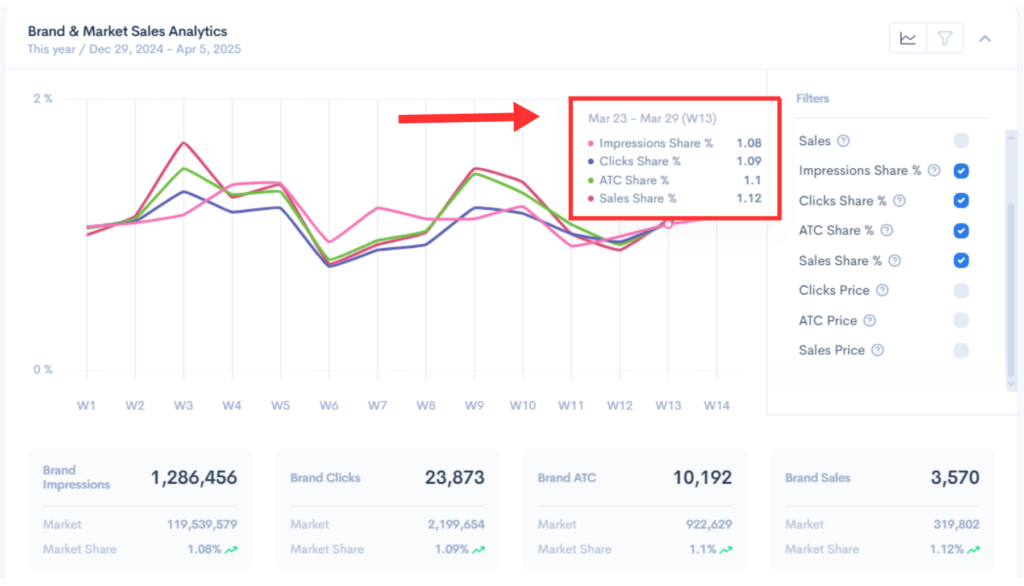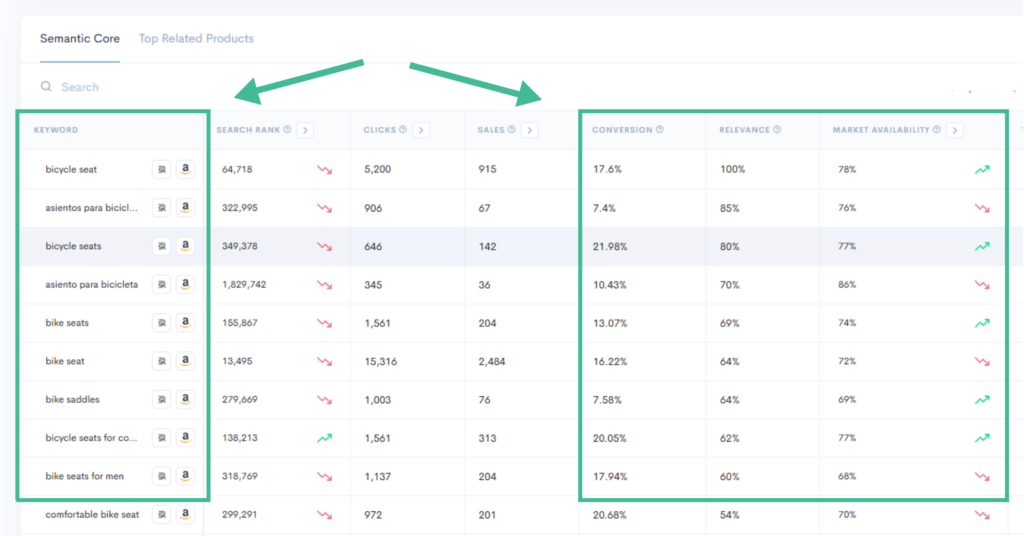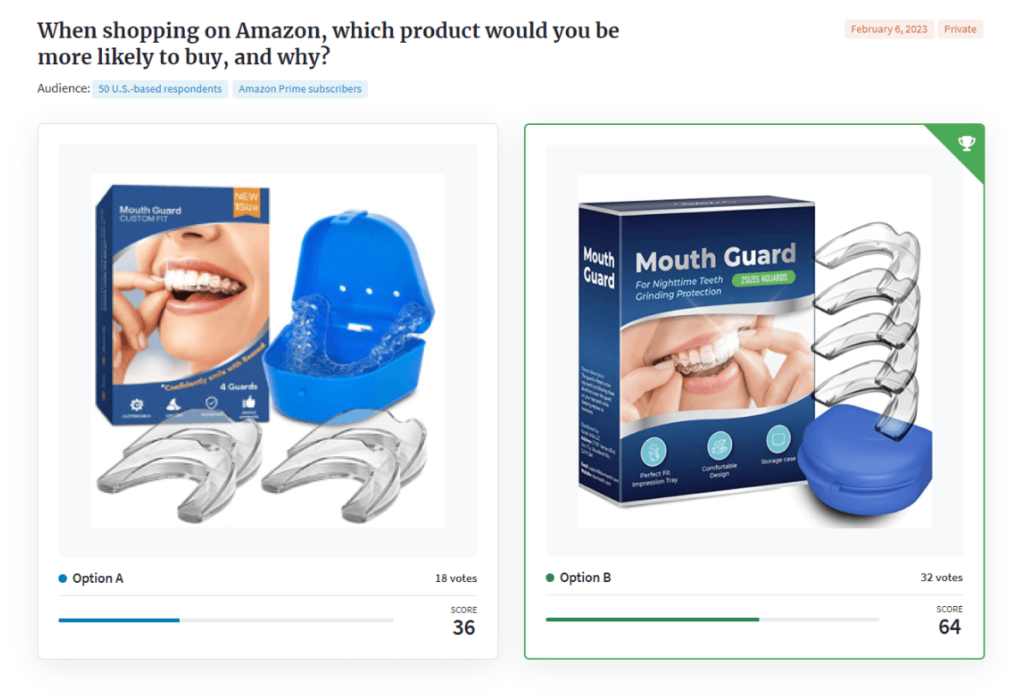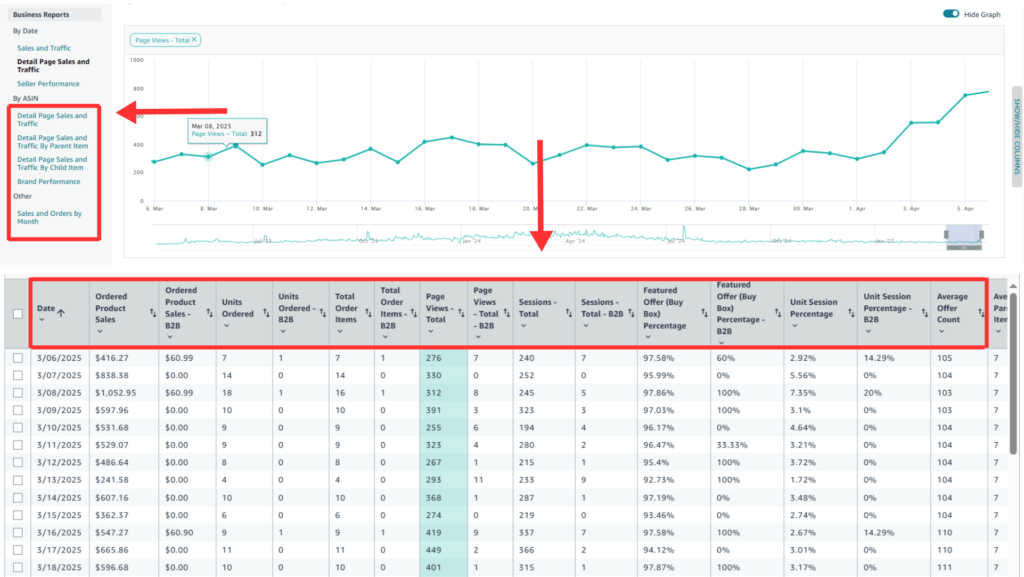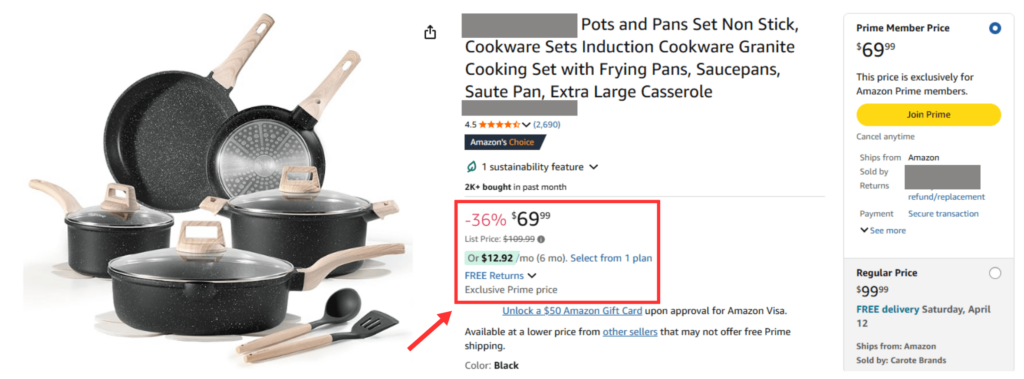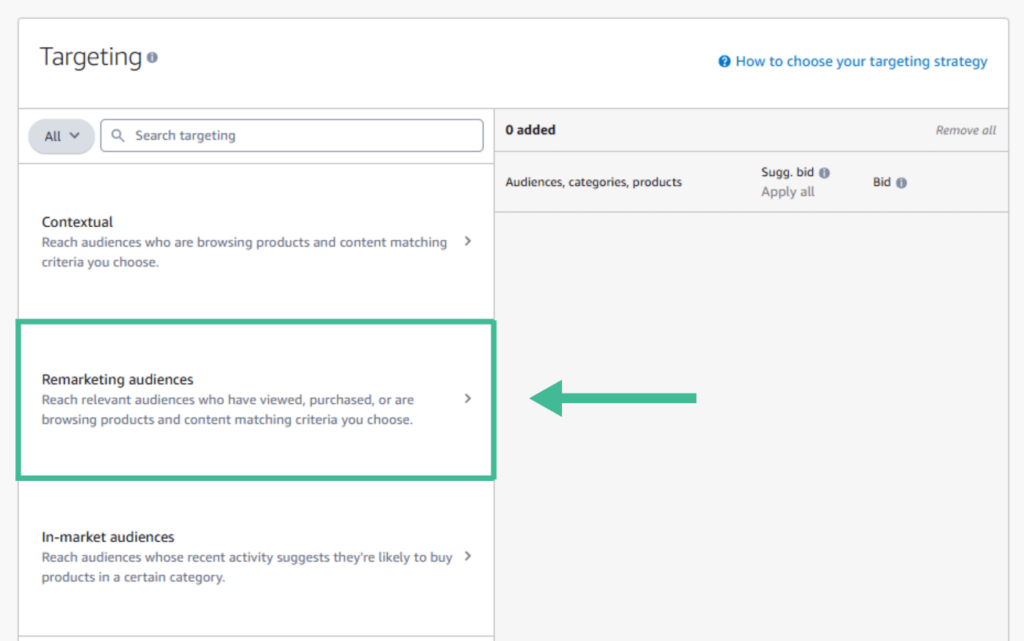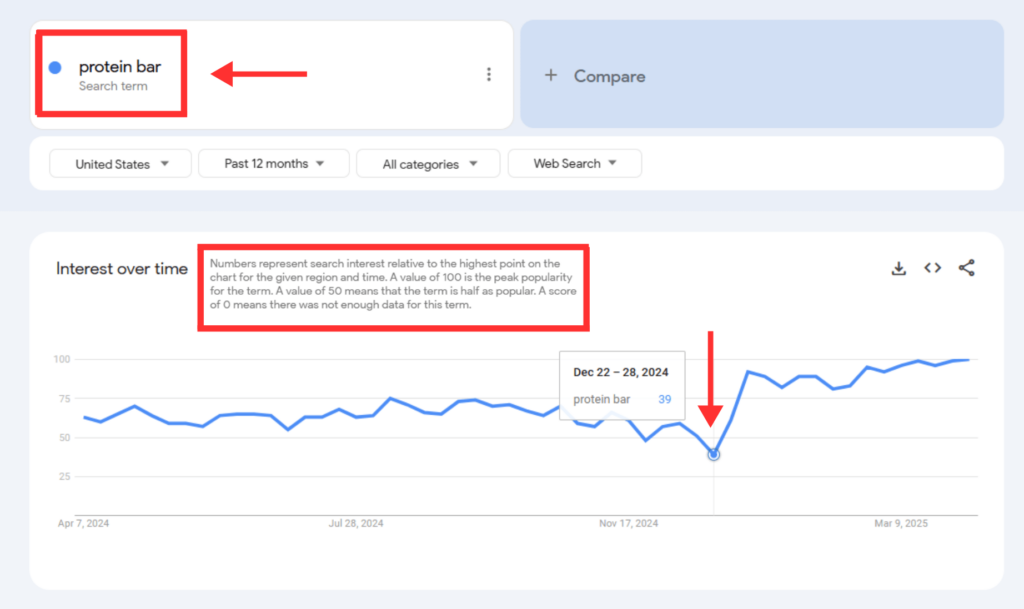Mastering The Amazon Shopping Journey: Advanced Strategies For Funnel Optimization
Sellerise Team, Contributor
9 min read -
Updated:A seamless shopping journey on Amazon isn’t just a nice-to-have feature for sellers — it’s essential for maximizing profitability. Amazon funnel optimization at all phases of their journey enhances the likelihood of conversions.
When guiding your potential customers through their buying expedition, the importance of Amazon funnel optimization cannot be overstated. These are the four key stages, each offering unique opportunities to optimize your approach:
- Awareness is all about getting your products noticed by the right audience. Effective keyword targeting and competitive insights play a vital role here.
- Consideration involves converting initial interest into genuine buying intent, which requires a close look at Click-Through Rates (CTR) and Add-to-Cart (ATC) ratios metrics.
- Conversion focuses on the final decision-making moment, demanding well-optimized product listing and strategic use of psychological triggers to overcome objections.
- Retention and Advocacy emphasize building long-term customer relationships and brand loyalty through post-purchase engagement and cross-selling opportunities.
Understanding and mastering each of these stages is crucial. Implement a comprehensive strategy and you will not only enhance the shopping experience but also significantly boost your overall success.
Stage 1: Awareness – Getting More Visibility
Attracting potential customers entails ensuring they find your product through listing optimization that matches your target market’s search behavior.
Here’s how:
Track Market Share
Understand your product’s positioning within the Amazon marketplace through Search Query Performance (SQP) reports. Try the Sellerise SQP Insights tool to track your Impression Share (how often your product appears in searches). It will also help you analyze your performance week-by-week and identify any drops in visibility.
Target the Right Keywords
Keep shoppers engaged and the Amazon A10 algorithm will reward your listing with a high ranking in the Search Engine Results Page (SERP). Use tools like Keyword Hunter to bid on keywords that have both high relevance and high conversion rates.
Leverage Competitor Insights
Sellers utilizing a full-funnel advertising strategy see, on average, 21% more new-to-brand sales than those who rely solely on Sponsored Products or Sponsored Brand ads. This is just one piece of information you can glean by studying your competitors’ marketing efforts.
Reviewing competitive listings will also allow you to identify valuable keyword opportunities that may not be immediately obvious.
Stage 2: Consideration – Turning Interest into Buying Intent
To convert a shopper into a buyer effectively, you should benchmark your listing’s performance with Click-Through Rates (CTR) and Add-to-Cart (ATC) ratios. If your numbers are low compared to market averages, check which keywords are underperforming.
This data can reveal whether your listings meet customer expectations or need refinement. Should it be the latter, optimize your product listing. Improve your title, bullet points, and images to address common customer concerns.
Amazon’s Conversion Path Reporting is a valuable tool for mapping the customer journey as it shows which ads and touchpoints influence each purchase. Take your analysis a step further by identifying any funnel gaps with cross-reference data from Sellerise SQP Insights. This will show which parts of your funnel need improvement.
Stage 3: Conversion – Closing the Sale in 7 Seconds
Carol Kinsey Goman, Ph.D. wrote the article Seven Seconds to Make a First Impression in Forbes, which describes how our brains execute one thousand computations within this time frame to assess the trustworthiness of an individual. This behavior translates to product pages in terms of convincing shoppers to buy.
Transform potential customer interest into sales by implementing the following Amazon funnel optimization strategies:
Identify Abandonment Reasons
Analyze patterns to understand why your customers leave without buying—price, missing details, or lack of trust? Review the Amazon Detail Page Report in your Seller Central account, compare Page Views and Sessions, and check if shoppers return multiple times before deciding to purchase.
Optimize Product Pages
Minimize cart abandonment rates by addressing common objections through improved product descriptions and responses to customer reviews.
A/B testing different versions of your product pages and keywords can reveal what resonates best with your audience, driving higher conversion rates. For instance, experimenting with different headlines, images, or call-to-action buttons can provide valuable insights into customer preferences.
Additionally, keywords should be continually optimized to align with current market trends and consumer search behaviors. Use Keyword Hunter to find terms with a high organic conversion rate (15%+).
Keep in mind as well that 94% of online shoppers read Amazon product reviews while browsing. Refining your strategy to cater to this behavior can significantly impact conversion rates.
Increase Perceived Value
Implementing psychological triggers encourage customers to complete their purchases. Here are some examples:
- Decoy Pricing Strategy. Add a higher-priced variant to make the regular version look like a great deal.
- Prime-Exclusive Discounts. Offer Prime-only coupons and highlight them in A+ Content (“Prime Members Save 15%”).
- Scarcity. Run a promotion for a limited time (flash sale, seasonal item) or product availability (Limited Edition, few stocks left).
- Social Proof. Encourage satisfied customers to leave good reviews. Highlight these along with Amazon’s Choice badges and excellent ratings. Thank those who provide positive feedback as well.
Reduce Cart Abandonment
Address common objections by leveraging data from previous stages, such as CTR and ATC ratios. You’ve already Identified where customers drop off in the buying process, so soothe those specific pain points accordingly. Also, ensure your listings clearly state what customers can expect from their package to prevent surprises, e.g. batteries not included.
Employing retargeting techniques can also re-engage potential buyers who have previously shown interest in your products but haven’t completed their purchase. Create tailored ads that remind them of their initial attraction or offer a limited-time discount to encourage them to finalize their purchase.
You can do this directly through Amazon Brand Tailored Promotions, which allow you to send targeted discounts to specific customer groups, such as recent browsers, cart abandoners, repeat Customers, High-Spend Customers or Potential New Customers. These promotions let you re-engage shoppers based on their behavior, giving you a powerful way to convert high-intent customers who just need a final push.
What is a good funnel conversion rate? According to a Databox survey, 30% of businesses say it’s 3.1% to 5%. Shoot for this!
Stage 4: Retention and Advocacy – Building Long-Term Loyalty
This stage is about creating a lasting relationship that encourages customers to choose your brand repeatedly, ultimately driving long-term profitability. Research by Bain & Company found that increasing customer retention rates by just 5% can lead to a 25% to 95% increase in profits. Moreover, loyal customers are less likely to defect to competitors and tend to spend more over their lifetime with the brand.
Below are proven methods to achieve a solid customer base. Employing them cannot only boost repeat purchases but also turn satisfied customers into brand advocates.
Track Repeat Customer Rates
Monitoring these numbers can give you insights into the long-term value of your customer base to your profitability. Check Amazon Brand Analytics in your Seller Central account to find products with high first-time sales but low repeat purchases.
Focus on those items and decide your next steps, whether to implement the four stages of the Amazon funnel or to remove them from your product lineup.
Strengthen Post-Purchase Engagement
What happens after a sale plays a critical role in how customers perceive your brand, and it shapes how a customer remembers your brand. Whether they come back, leave a review, or recommend you to someone else, it all starts here.
One of the most consistent opportunities in this stage is collecting reviews. They drive trust, influence conversions, and feed Amazon’s ranking algorithm. But, requesting them at scale can be operationally inefficient. Especially when you’re managing dozens of ASINs, or just trying to stay ahead of operations. Sellerise’s Review Requester can help you automate Amazon’s official “Request a Review” flow.
You can choose exactly which SKUs are included, and set conditions for who receives requests. For example, skip refunded orders or prioritize repeat buyers, keeping things clean, targeted, and in line with Amazon’s rules.
Another tactic to encourage repeat purchase and expand your customer base is to add a “Refer a Friend” insert with a discount code in your product packaging.
Leverage Cross-Selling Opportunities
Apply the Market Basket Analysis, i.e. find products frequently bought with yours and bid on their ASINs via Sponsored Products. Run aggressive PPC campaigns on complementary ASINs. Target those with high traffic (>10k monthly views) but low ratings (<4 stars).
Use Amazon’s Recommendation Engine
The platform’s AI recommendation system is incredibly potent. An estimated 35% of Amazon’s revenue is generated by its recommendation algorithms such as Frequently Bought Together and Customers Who Viewed This Also Viewed.
You can increase the chances of your products appearing in these sections by offering products that naturally pair well to encourage buying them together. Promotions like bundle discounts trigger these algorithms as well. Additionally, be proactive by finding Frequently Bought Together products and targeting them with Sponsored Product ads.
An advanced tactic: If you have multiple SKUs, use Amazon’s Promotion tools to run a small discount promotion on purchasing two items together for money or percentage off. Sales generated through such promos can train Amazon’s algorithm that Product A and Product B are frequently bought together, increasing their linkage in recommendations.
Pro Tips for Amazon Funnel Optimization
Incorporate these advanced strategies to significantly enhance your efforts:
Brand Defense Via Sponsored Brands
Brand defense campaigns help maintain your market position against competitors. This strategy involves bidding on your own branded keywords to prevent the competition from appearing in SERPs when shoppers search for your brand name, product name, or variant. It’s an effective approach to protect your market share from those who try to poach your customers with similar products.
Ensuring your brand is visible when potential customers search for related items can increase your chances of securing the sale. To guarantee your brand defense’s success, bid with Sponsored Brand ads that direct-click to a custom storefront featuring upsells, not the product page, to increase session duration and Average Order Value (AOV).
Amazon + Shopify Integration
Integrating your Amazon product pages or storefront with Shopify can offer a smooth transition between platforms, making it easier for customers to complete their purchases. This seamless shopping experience improves the overall customer experience and potentially increases conversion.
The more frictionless the buying process, the higher the likelihood of conversion. And for you as a seller, it allows for better inventory management and centralized control over multiple sales channels.
Monitoring External Trends
By staying informed about changes in consumer behavior and market dynamics, you can identify emerging opportunities before your competitors. For instance, keeping an eye on seasonal trends or shifts in popular search terms can help you adjust your strategies in real time, ensuring that your products remain relevant and appealing.
Amazon Touchpoint Techniques
Drive traffic to your website’s landing pages, then implement Amazon’s Buy Now widget directly on your site. This widget redirects cold traffic (users who may not yet trust your brand) into Amazon, a trusted marketplace where customers are more likely to convert. Brands like Obvi are already using this strategy successfully.
Data Analytics Tools
Track and analyze customer behavior for insights that can inform your advertising and product listing strategies, and facilitate more informed decisions. For instance, identifying which keywords drive the most traffic and conversions can help you refine your targeting efforts.
Full-Funnel Advertising Strategies
Brands employing a comprehensive approach often see significant performance improvements, such as:
- 8% month-on-month sales increase compared to those that depend solely on Sponsored Products or Sponsored Brands
- 190% more ad-attributed Subscribe & Save actions than those focusing on a single ad type
- 250% and 200% growth rates for detailed page views and add-to-cart actions, respectively
These statistics underscore the importance of a holistic approach of utilizing multiple ad types and touchpoints to guide customers through the conversion process. An extensive method means you’re engaging potential customers from initial awareness through purchase and beyond.
Advanced Strategies for Funnel Optimization: A Recap
Optimizing each stage of the Amazon shopping journey is a strategic endeavor that requires ongoing effort and a keen understanding of your customers’ behaviors and needs. By focusing on the four key stages—Awareness, Consideration, Conversion, and Retention and Advocacy—you can create a seamless and effective funnel that not only attracts potential customers but also guides them toward making a purchase and becoming loyal advocates of your brand.
Adapting to market trends is also crucial. As the e-commerce landscape is continually evolving, staying informed about shifts in consumer preferences and emerging opportunities can give you a competitive edge. Whether it’s optimizing your keyword targeting based on current search trends or refining your product listings to better meet customer expectations, agility and responsiveness are key.
Ultimately, the goal is to create a shopping experience that is both intuitive and engaging, guiding customers smoothly from interest to intent, and finally, to purchase. By maintaining a focus on continuous improvement and data-driven strategies, sellers will be able to enhance the shopping experience while achieving sustained growth and profitability.
